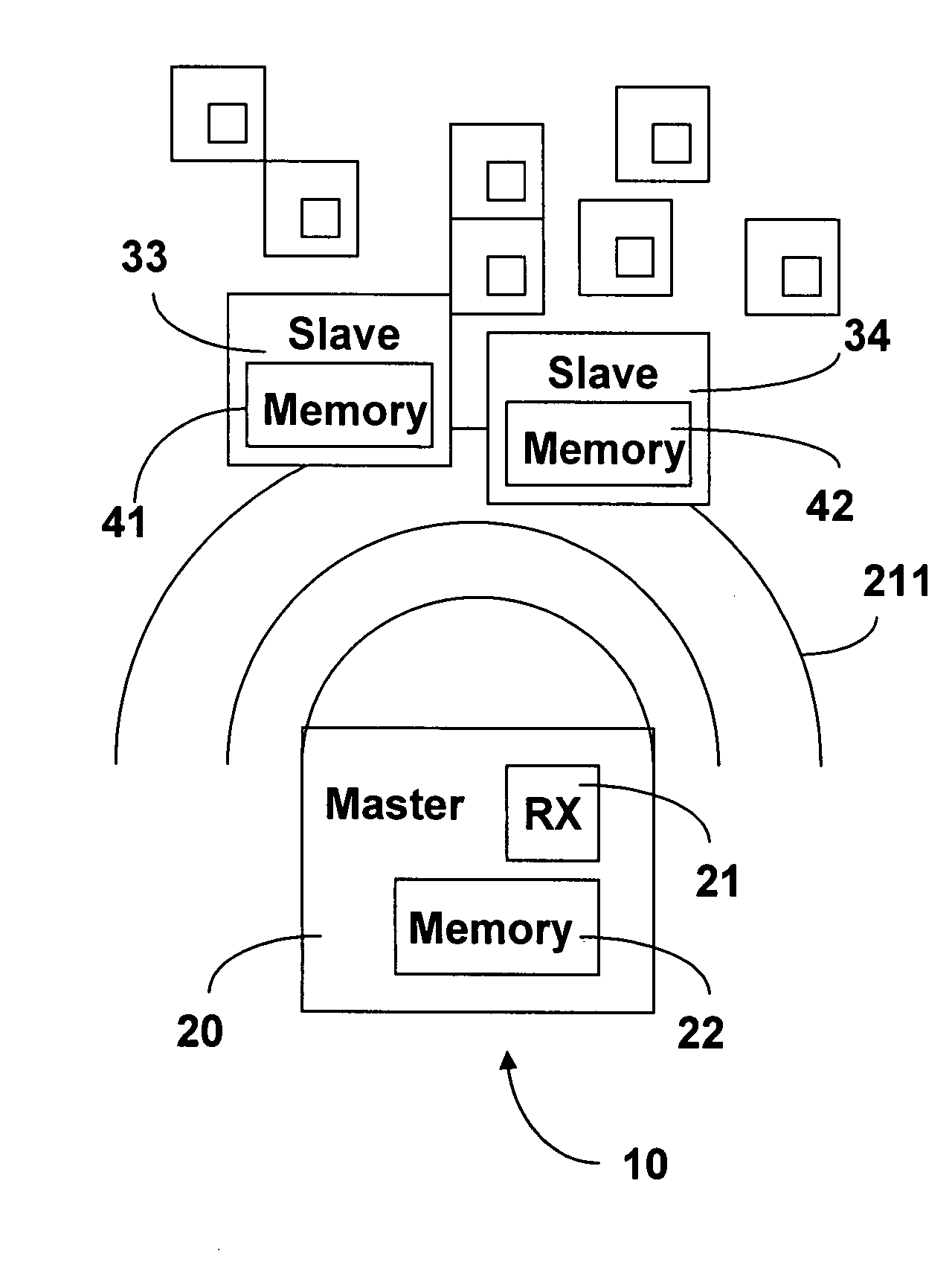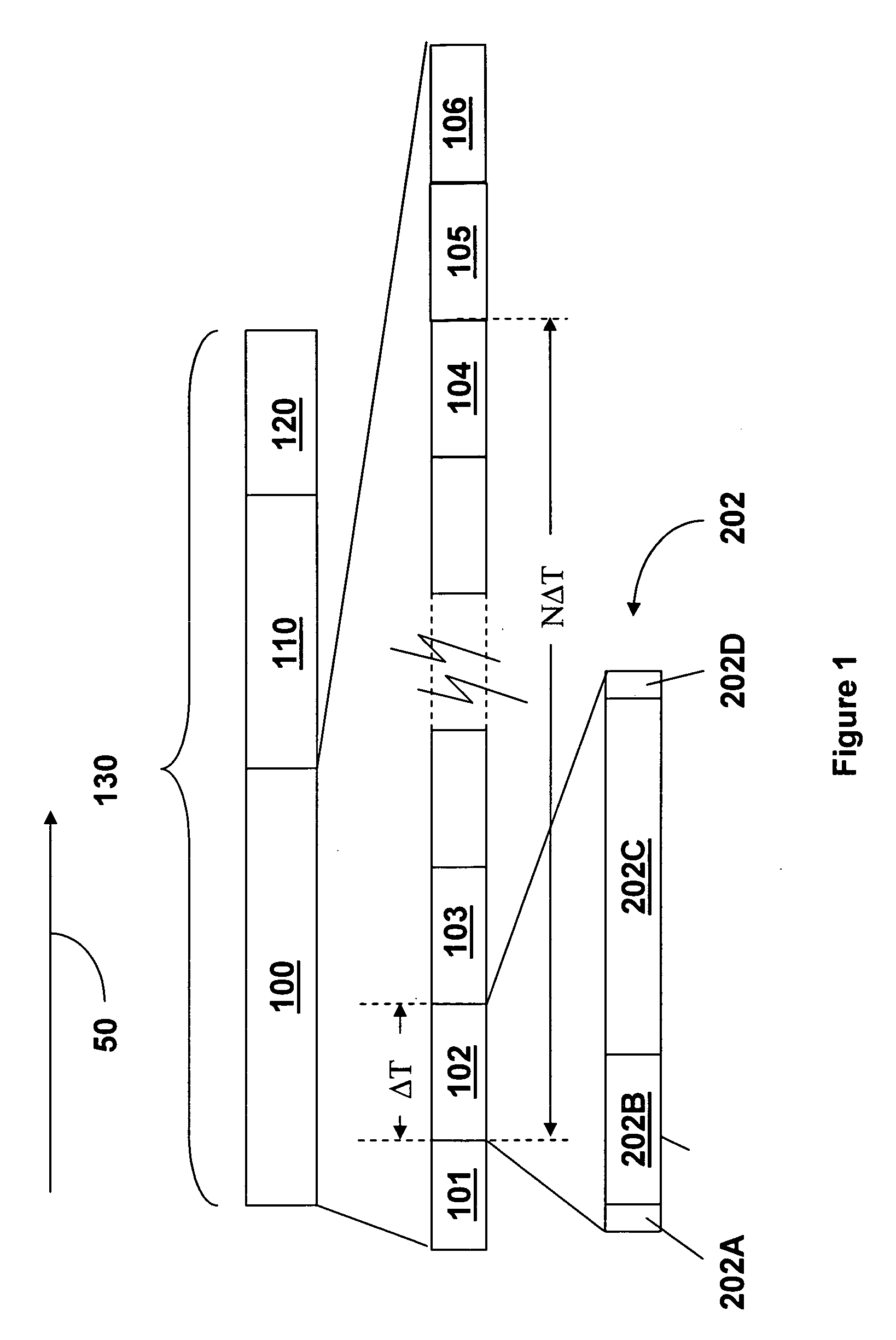System and method for slaves in a master-slave wireless network to dynamically develop affinity to a time slot
a wireless network and slave technology, applied in the field of preventing data collisions in masterslave networks, can solve the problems of increasing the total system cost, the size and cost of each rfid tag,
- Summary
- Abstract
- Description
- Claims
- Application Information
AI Technical Summary
Problems solved by technology
Method used
Image
Examples
first embodiment
[0071]FIG. 7 is a method 700 of modifying an affinity value in accordance with the present invention. Method 700 applies to a slave 31 within a master-slave wireless network 10 that requires only one interrogation phase 100 per interrogation event 130 and which has experienced at least one successful interrogation event 130. In a successful interrogation event 130, the response signal 202 is received and recognized by the master 20.
[0072] During stage S702, the slave 31 reduces the affinity value by the affinity reducing value. Since the slave 31 has experienced at least one successful interrogation event the affinity value is greater than the affinity threshold value before the reduction. During stage S704, the slave 31 determines the affinity value is not less than the affinity threshold value. In one embodiment of method 700, the affinity reducing value is one and the affinity threshold value is one. During stage S706, the slave determines the master 20 is not transmitting a seco...
second embodiment
[0074]FIG. 8 is a method 800 of modifying an affinity value in accordance with the present invention. Method 800 applies to a slave 31 within a master-slave wireless network 10 that requires more than one interrogation phase 100 per interrogation event 130 and which has experienced at least one successful interrogation event 130.
[0075] During stage S802, the slave 31 reduces the affinity value by the affinity reducing value. Since the slave 31 has experienced at least one successful interrogation event the affinity value is greater than the affinity threshold value before the reduction. In one embodiment of method 800, the affinity reducing value is one and the affinity threshold value is one. During stage S804, the slave 31 determines the affinity value is not less than the affinity threshold value.
[0076] During stage S806, the slave 31 receives the second interrogation phase command signal 211 from the master 20. During stage S808, the slave 31 transmits a response signal 212 to ...
third embodiment
[0078]FIG. 9 is a method 900 of modifying an affinity value in accordance with the present invention. Method 900 applies to a slave 31 within a master-slave wireless network 10 that requires only one interrogation phase 100 per interrogation event 130 and which has experienced enough unsuccessful interrogation events 130 to drive the affinity value down to the value equal to the affinity threshold value before the first interrogation phase 100 of the current interrogation event 130.
[0079] The affinity value is driven to the value of the affinity threshold value by going through iterations of method 700. Take an exemplary case in which the affinity reducing value is one and the affinity threshold value is one and the affinity value was set to an affinity value M as described above with reference to stage S604 in method 600 of FIG. 6. If the slave 31 experienced a successful interrogation event 130 and then the slave 31 experienced (M−1) unsuccessful interrogation events 130, then sla...
PUM
 Login to View More
Login to View More Abstract
Description
Claims
Application Information
 Login to View More
Login to View More - R&D
- Intellectual Property
- Life Sciences
- Materials
- Tech Scout
- Unparalleled Data Quality
- Higher Quality Content
- 60% Fewer Hallucinations
Browse by: Latest US Patents, China's latest patents, Technical Efficacy Thesaurus, Application Domain, Technology Topic, Popular Technical Reports.
© 2025 PatSnap. All rights reserved.Legal|Privacy policy|Modern Slavery Act Transparency Statement|Sitemap|About US| Contact US: help@patsnap.com



